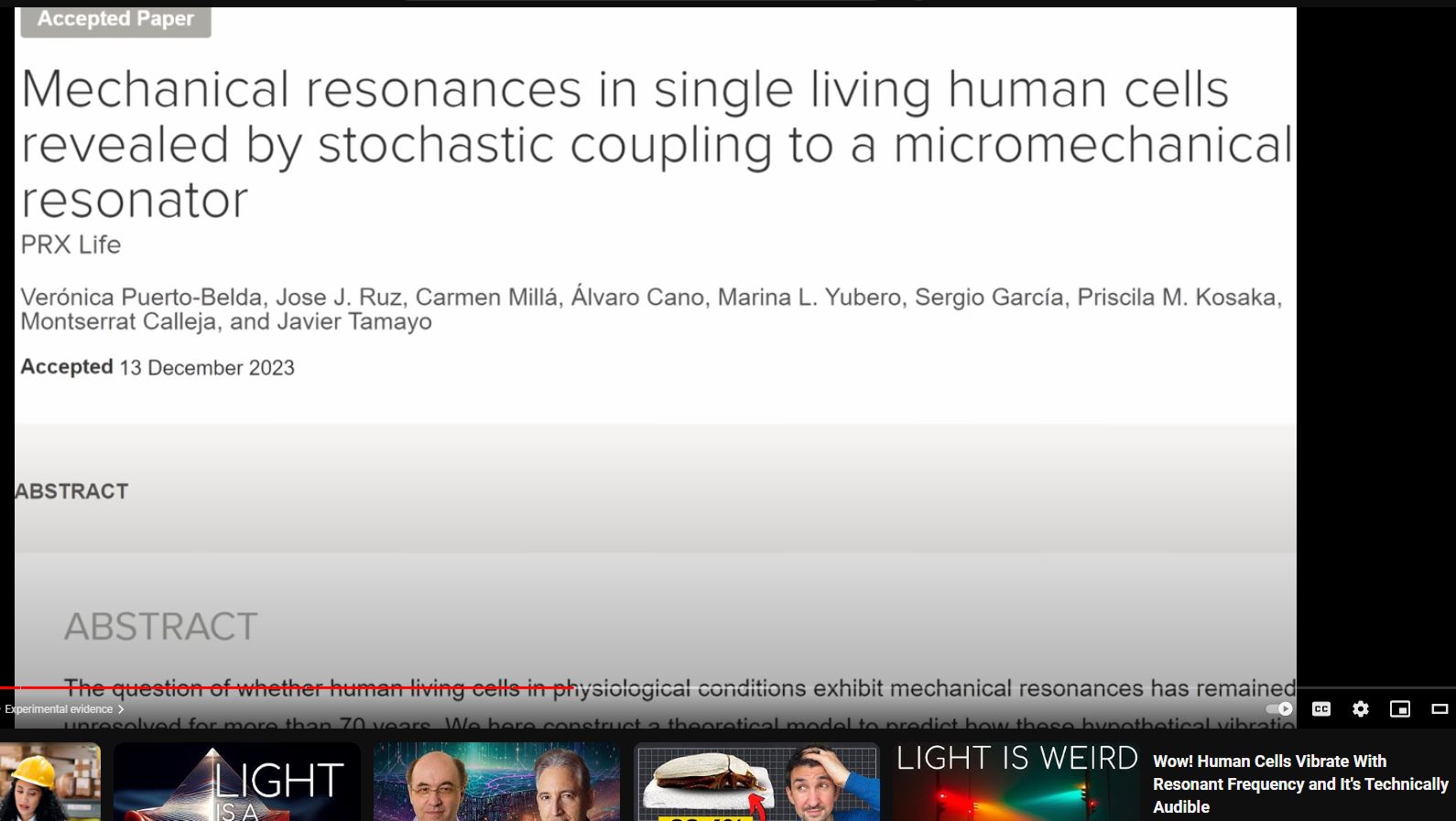Human Cells Vibrate With Resonant Frequency
“In a crystal we have clear evidence of the existence of a formative life principle, and though we cannot understand the life of a crystal, it is nonethless a living being.” – Nikola Tesla
The study “Mechanical Resonances in Single Living Human Cells Revealed by Stochastic Coupling to a Micromechanical Resonator” explores how mechanical resonances in individual living human cells are detected through their stochastic interaction with a micromechanical resonator. It delves into intriguing aspects of cell behavior:
1. Objective: The researchers aimed to investigate mechanical properties and resonances in individual living human cells.
2. Methodology: They used a micro-mechanical resonator, a device capable of detecting very small mechanical movements, to interact with single cells. This interaction allowed them to measure mechanical resonances within the cells.
3. Findings:
– **Mechanical Resonances**: The study revealed that living human cells exhibit mechanical resonances, similar to how objects like guitar strings or tuning forks vibrate at specific frequencies.
– **Stochastic Coupling**: The term “stochastic coupling” refers to the random or unpredictable nature of how the cells interacted with the resonator. This randomness is a characteristic feature of biological systems.
– **Cellular Dynamics**: By studying these mechanical resonances, researchers gained insights into the dynamic behaviors of individual cells, such as their stiffness, elasticity, and response to external forces.
4. Significance:
– **Biophysical Understanding**: Understanding the mechanical properties of cells at this level can contribute to our knowledge of cell biology and biophysics. It may help in areas such as tissue engineering, regenerative medicine, and understanding disease mechanisms.
– **Diagnostic Potential**: Insights into cellular mechanical properties could also have implications for diagnostics, as changes in cell mechanics are associated with various diseases, including cancer and cardiovascular disorders.
5. Future Directions: The findings open doors for further research into how mechanical properties vary between different cell types, how they change under different physiological conditions or disease states, and how interventions (like drugs or mechanical stimuli) affect cell mechanics.
Overall, this study highlights the intricate mechanical nature of living cells and underscores the importance of interdisciplinary approaches in understanding biological systems.
